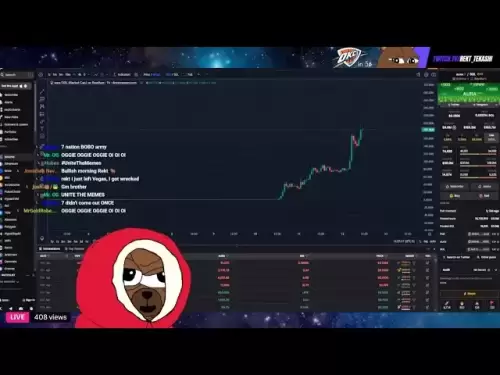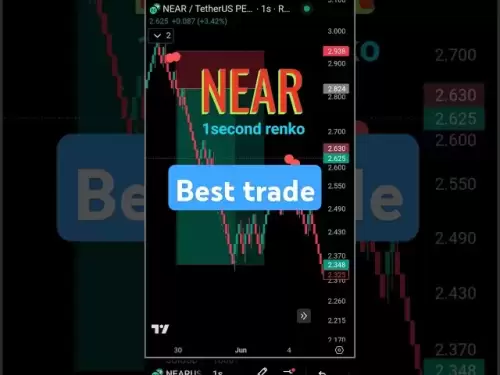-
 Bitcoin
Bitcoin $105,288.6945
-2.61% -
 Ethereum
Ethereum $2,546.9059
-7.84% -
 Tether USDt
Tether USDt $1.0004
0.05% -
 XRP
XRP $2.1438
-4.68% -
 BNB
BNB $653.2251
-1.80% -
 Solana
Solana $146.3449
-8.07% -
 USDC
USDC $0.9997
0.01% -
 Dogecoin
Dogecoin $0.1778
-5.94% -
 TRON
TRON $0.2688
-2.27% -
 Cardano
Cardano $0.6373
-7.04% -
 Hyperliquid
Hyperliquid $41.2776
-4.37% -
 Sui
Sui $3.0223
-9.71% -
 Chainlink
Chainlink $13.3280
-7.77% -
 Bitcoin Cash
Bitcoin Cash $430.6921
-2.12% -
 UNUS SED LEO
UNUS SED LEO $9.0426
1.98% -
 Avalanche
Avalanche $19.2275
-8.92% -
 Stellar
Stellar $0.2600
-5.55% -
 Toncoin
Toncoin $2.9984
-6.13% -
 Shiba Inu
Shiba Inu $0.0...01195
-5.71% -
 Hedera
Hedera $0.1566
-7.37% -
 Litecoin
Litecoin $84.6896
-5.28% -
 Polkadot
Polkadot $3.8188
-6.28% -
 Ethena USDe
Ethena USDe $1.0004
0.00% -
 Monero
Monero $311.9801
-3.66% -
 Dai
Dai $0.9998
0.00% -
 Bitget Token
Bitget Token $4.5149
-4.09% -
 Uniswap
Uniswap $7.4602
-6.13% -
 Pepe
Pepe $0.0...01088
-11.16% -
 Aave
Aave $280.9076
-8.02% -
 Pi
Pi $0.5699
-8.88%
Is the low continuous small positive line a fund accumulation? This feature is the key!
A low continuous small positive line in crypto charts suggests gradual accumulation by large players, signaling potential for future price rallies if confirmed with volume and on-chain metrics.
Jun 11, 2025 at 11:36 pm
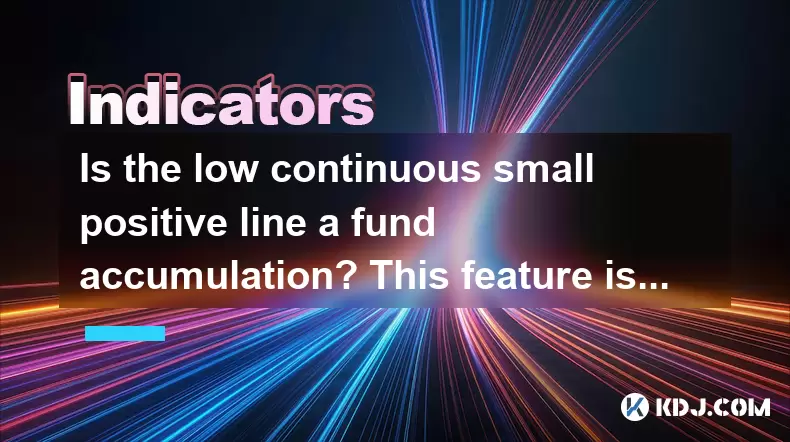
Understanding the Concept of Low Continuous Small Positive Lines
In the cryptocurrency market, low continuous small positive lines refer to a chart pattern where an asset consistently shows minor upward price movements over several periods without significant volume surges or sharp increases. This pattern is often observed on candlestick charts and can be interpreted as a sign of gradual accumulation by institutional investors or large holders (commonly referred to as "whales").
These small green candles typically reflect a controlled buying process where big players enter the market slowly to avoid triggering a rapid price increase that could lead to higher entry costs. Each candlestick usually has minimal wicks, indicating steady demand with limited selling pressure.
Key Characteristics:
- Small bullish candlesticks appearing consecutively.
- Volume remains relatively stable but not explosive.
- Price consolidates within a narrow range without breaking key resistance levels.
- Often occurs after a downtrend or during sideways movement.
Why Accumulation Patterns Matter in Crypto Trading
Accumulation patterns are critical for traders who aim to identify early signs of potential price rallies. In traditional markets, these patterns are well-documented, but in crypto, they take on added significance due to the high volatility and speculative nature of the assets involved.
When analyzing a low continuous small positive line, it's essential to understand that large funds or institutions may be acquiring positions quietly. The market isn’t reacting strongly because the buying pressure is carefully balanced to avoid triggering panic selling or aggressive shorting.
Benefits of Recognizing Accumulation:
- Early entry before a breakout.
- Better risk-to-reward ratios.
- Improved understanding of market structure.
- Ability to distinguish between real accumulation and random consolidation.
How to Confirm if It’s Genuine Fund Accumulation
Identifying whether a low continuous small positive line represents actual fund accumulation requires more than just visual analysis of candlesticks. Several technical indicators and tools can help confirm this hypothesis.
One effective method is to check volume profiles alongside price action. If you notice consistent volume during the formation of small positive candles, especially without major spikes, it suggests steady inflow rather than retail-driven speculation.
Another approach involves using on-chain analytics tools such as Glassnode or Santiment to monitor wallet activity. A decrease in circulating supply or increased inflows into exchange wallets from long-term holders can indicate accumulation.
Steps to Confirm Accumulation:
- Analyze volume consistency across candle formations.
- Check on-chain metrics like entity-adjusted supply held long-term.
- Monitor order book depth for increasing buy walls.
- Use tools like OBV (On-Balance Volume) or Chaikin Money Flow to assess inflows.
Differentiating Accumulation from Other Consolidation Patterns
It’s crucial to distinguish between genuine accumulation and other forms of consolidation, such as sideways trading or distribution masquerading as accumulation. Not every small green candle indicates smart money buying.
For example, during a distribution phase, sellers may create small up days to lure buyers into entering at unfavorable prices. These patterns often come after a strong rally and show signs of weakening momentum despite modest gains.
To differentiate:
- Look for declining volume during the small positive candles.
- Check for bearish divergences in momentum indicators like RSI or MACD.
- Observe price behavior near key support/resistance zones — accumulation often respects support levels.
Indicators to Watch:
- Relative Strength Index (RSI): Divergence from price action can signal fake accumulation.
- Moving Averages: Accumulation phases often occur above key moving averages like the 50 EMA.
- Order Book Analysis: Persistent bids and growing buy walls are signs of real accumulation.
Practical Steps to Trade Based on Accumulation Signals
Once you’ve confirmed that the low continuous small positive line likely reflects fund accumulation, the next step is to consider how to trade it effectively.
A conservative strategy would involve waiting for a breakout above resistance accompanied by increased volume and momentum confirmation. This reduces the risk of false signals while still allowing for participation in the subsequent move.
Alternatively, traders with a higher risk tolerance might look to enter gradually as the accumulation progresses, using each small green candle as a potential entry point.
Trading Plan Example:
- Set stop-loss below the lowest point of the accumulation zone.
- Take partial profits at Fibonacci extension levels post-breakout.
- Scale into positions with each confirmed accumulation candle.
- Use trailing stops once the trend confirms.
Frequently Asked Questions
Q1: Can accumulation patterns fail?
Yes, accumulation patterns can fail. Even if all signs suggest a buildup of long positions, external factors such as regulatory news, macroeconomic shifts, or sudden liquidity withdrawals can reverse the trend.
Q2: How long should I expect accumulation to last?
There’s no fixed duration. Some accumulation phases last days, others span weeks or even months. It depends on the size of the player accumulating and their strategy for minimizing market impact.
Q3: Is accumulation visible on all timeframes?
While accumulation can appear on any timeframe, it's most reliable on higher timeframes like the 4-hour or daily charts. Lower timeframes tend to have more noise and are prone to manipulation.
Q4: Should I rely solely on accumulation patterns for trading decisions?
No single indicator or pattern should be used in isolation. Always combine accumulation signals with broader context including macro trends, sentiment analysis, and fundamental developments in the project or ecosystem.
Disclaimer:info@kdj.com
The information provided is not trading advice. kdj.com does not assume any responsibility for any investments made based on the information provided in this article. Cryptocurrencies are highly volatile and it is highly recommended that you invest with caution after thorough research!
If you believe that the content used on this website infringes your copyright, please contact us immediately (info@kdj.com) and we will delete it promptly.
- Bitwise CEO Predicts Bitcoin Holders Will Stop Selling Once Price Surpasses $130,000
- 2025-06-14 01:30:12
- Neo Pepe’s Revolution Begins
- 2025-06-14 01:30:12
- Aptos (APT) Token Unlock – June 12, 2025
- 2025-06-14 01:25:12
- Aptos (APT) Token Unlock – June 12, 2025
- 2025-06-14 01:25:12
- Ruvi AI Emerges as a Potential Rival to Cardano (ADA)
- 2025-06-14 01:20:12
- Market Capitalization Often Confuses Casual Investors, and Detractors Have Weaponized It Against Bullish XRP Price Predictions
- 2025-06-14 01:20:12
Related knowledge
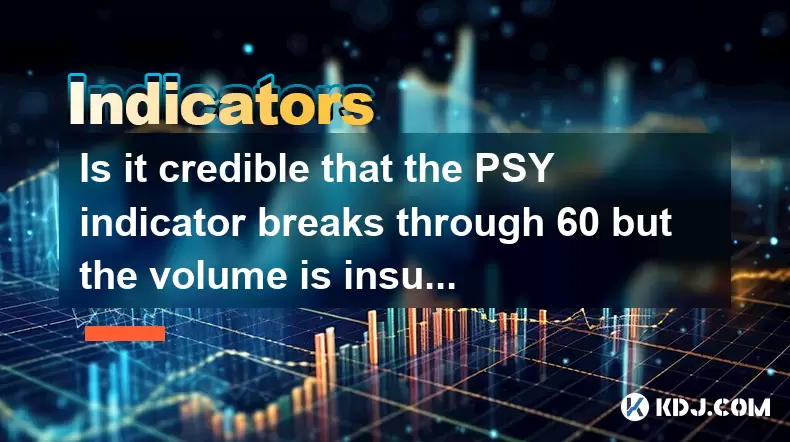
Is it credible that the PSY indicator breaks through 60 but the volume is insufficient?
Jun 14,2025 at 12:14am
Understanding the PSY Indicator in Cryptocurrency TradingThe Psychological Line (PSY) indicator is a momentum oscillator used primarily to measure the sentiment of traders and investors in financial markets, including the cryptocurrency space. It calculates the ratio of days where prices closed higher versus lower over a specified period, typically 12 o...
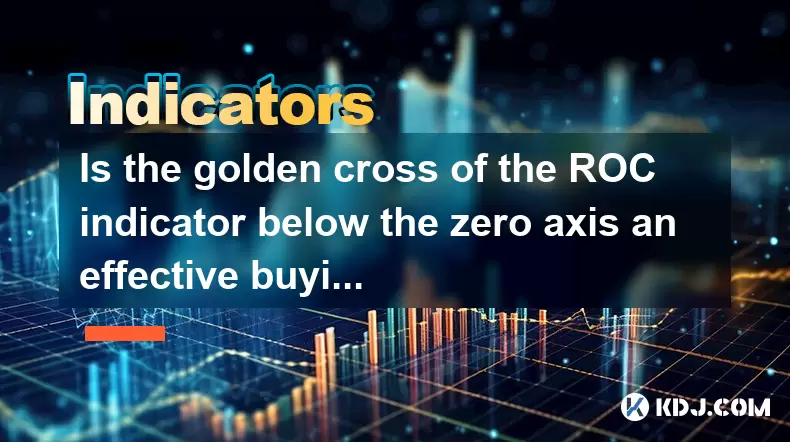
Is the golden cross of the ROC indicator below the zero axis an effective buying point?
Jun 14,2025 at 01:29am
Understanding the ROC Indicator and Its SignificanceThe Rate of Change (ROC) indicator is a momentum oscillator used in technical analysis to measure the percentage change in price between the current closing price and the closing price from a set number of periods ago. This tool helps traders assess the speed at which prices are changing, offering insi...

Will the RSI fall after the top divergence? How to improve the judgment accuracy?
Jun 13,2025 at 11:21pm
Understanding RSI and Top Divergence in Cryptocurrency TradingThe Relative Strength Index (RSI) is a momentum oscillator widely used in cryptocurrency trading to measure the speed and change of price movements. It typically ranges from 0 to 100, with levels above 70 considered overbought and below 30 considered oversold. In crypto markets, where volatil...
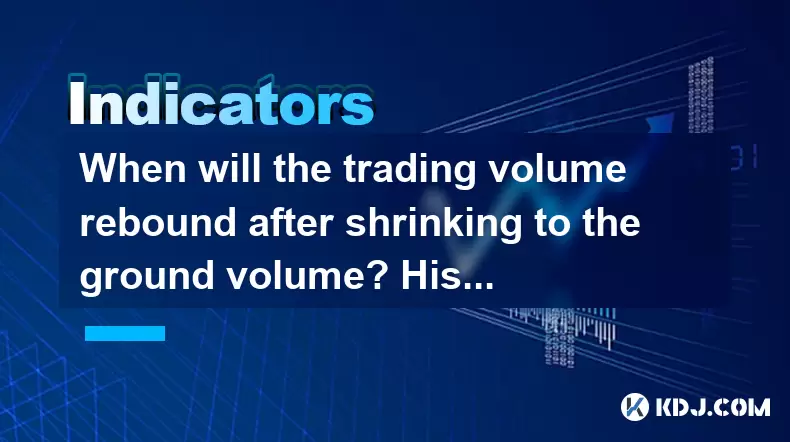
When will the trading volume rebound after shrinking to the ground volume? Historical percentile comparison method
Jun 13,2025 at 03:36pm
Understanding the Ground Volume Concept in Cryptocurrency MarketsIn cryptocurrency trading, 'ground volume' refers to a period when the trading volume of a particular asset or market drops significantly, often reaching multi-month or even multi-year lows. This phenomenon typically signals a lack of interest from traders and investors, suggesting that th...
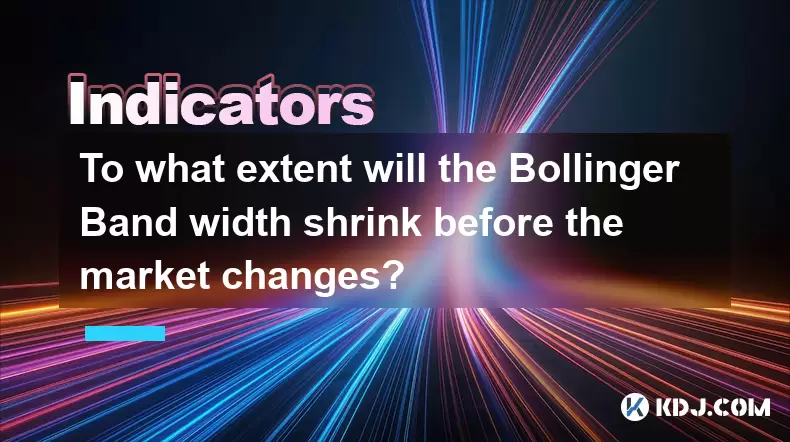
To what extent will the Bollinger Band width shrink before the market changes?
Jun 13,2025 at 06:35pm
Understanding the Bollinger Band Width and Its SignificanceThe Bollinger Band width is a critical technical analysis tool used in cryptocurrency trading to measure market volatility. It consists of three lines: a simple moving average (SMA), an upper band, and a lower band. The distance between the upper and lower bands reflects the level of volatility ...
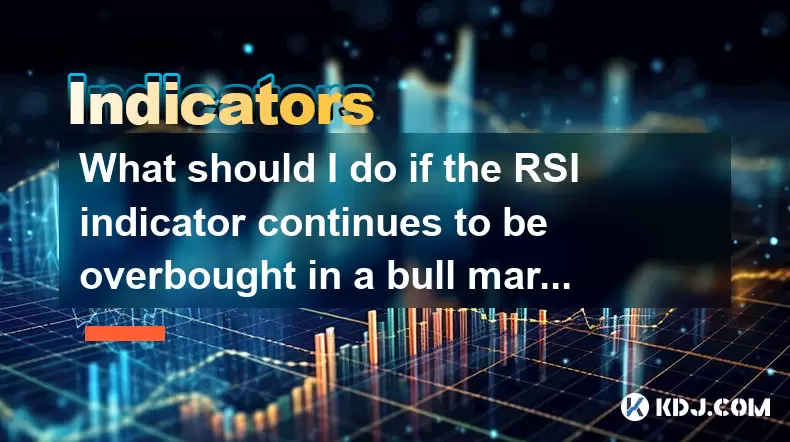
What should I do if the RSI indicator continues to be overbought in a bull market? How to adjust the overbought zone threshold?
Jun 13,2025 at 05:57pm
Understanding the RSI Indicator in a Bull MarketThe Relative Strength Index (RSI) is a momentum oscillator commonly used by traders to assess overbought or oversold conditions of an asset. In a bull market, especially within the cryptocurrency space, prices can remain elevated for extended periods. This often leads to the RSI indicator staying in the ov...

Is it credible that the PSY indicator breaks through 60 but the volume is insufficient?
Jun 14,2025 at 12:14am
Understanding the PSY Indicator in Cryptocurrency TradingThe Psychological Line (PSY) indicator is a momentum oscillator used primarily to measure the sentiment of traders and investors in financial markets, including the cryptocurrency space. It calculates the ratio of days where prices closed higher versus lower over a specified period, typically 12 o...

Is the golden cross of the ROC indicator below the zero axis an effective buying point?
Jun 14,2025 at 01:29am
Understanding the ROC Indicator and Its SignificanceThe Rate of Change (ROC) indicator is a momentum oscillator used in technical analysis to measure the percentage change in price between the current closing price and the closing price from a set number of periods ago. This tool helps traders assess the speed at which prices are changing, offering insi...

Will the RSI fall after the top divergence? How to improve the judgment accuracy?
Jun 13,2025 at 11:21pm
Understanding RSI and Top Divergence in Cryptocurrency TradingThe Relative Strength Index (RSI) is a momentum oscillator widely used in cryptocurrency trading to measure the speed and change of price movements. It typically ranges from 0 to 100, with levels above 70 considered overbought and below 30 considered oversold. In crypto markets, where volatil...

When will the trading volume rebound after shrinking to the ground volume? Historical percentile comparison method
Jun 13,2025 at 03:36pm
Understanding the Ground Volume Concept in Cryptocurrency MarketsIn cryptocurrency trading, 'ground volume' refers to a period when the trading volume of a particular asset or market drops significantly, often reaching multi-month or even multi-year lows. This phenomenon typically signals a lack of interest from traders and investors, suggesting that th...

To what extent will the Bollinger Band width shrink before the market changes?
Jun 13,2025 at 06:35pm
Understanding the Bollinger Band Width and Its SignificanceThe Bollinger Band width is a critical technical analysis tool used in cryptocurrency trading to measure market volatility. It consists of three lines: a simple moving average (SMA), an upper band, and a lower band. The distance between the upper and lower bands reflects the level of volatility ...

What should I do if the RSI indicator continues to be overbought in a bull market? How to adjust the overbought zone threshold?
Jun 13,2025 at 05:57pm
Understanding the RSI Indicator in a Bull MarketThe Relative Strength Index (RSI) is a momentum oscillator commonly used by traders to assess overbought or oversold conditions of an asset. In a bull market, especially within the cryptocurrency space, prices can remain elevated for extended periods. This often leads to the RSI indicator staying in the ov...
See all articles





















